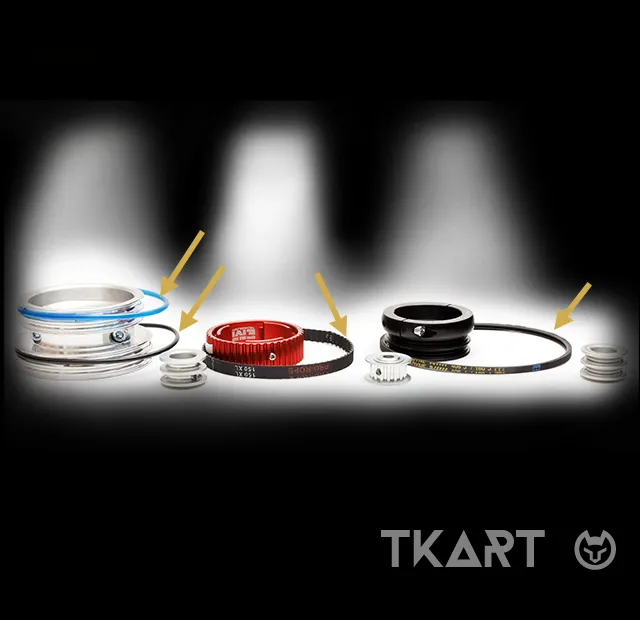Frequent Searches
Frequent Searches
 Exclusive Content
Exclusive Content

WATER PUMP TRANSMISSION BELTS: THE TEST OF 4 DIFFERENT TYPES AND TIPS TO KNOW HOW AND WHEN TO USE THEM
In kart engines that have a liquid cooling system (when the water pump is not "on board", i.e. not incorporated into the engine, but is instead external), the transmission system between the water pump and the axle plays a fundamental role in achieving the correct operating temperatures of the engine (to learn more, read "Technique | Cylinder cooling" and "Technique | The radiator") and, therefore, affects performance on the track. Over the years, several transmission systems have been developed (for a general overview, we recommend reading this "Must Have | Choose the best transmission system for your kart water pump"), each with its own peculiarities, strengths and weaknesses. But what are the differences in terms of flow rate of the water produced by the water pump and absorption of energy produced by the engine given by a system that uses O-Rings compared to a toothed belt? Or, what are the advantages (if any) provided by the most innovative systems such as the "Power Saver" by New-Line Racing? Thanks to the collaboration with the Italian company (a leading brand in the production of cooling systems for Racing karts), we tested and measured the performance ensured by the most popular transmission systems on the market with a special test bench. We have understood their differences and advise you when and how to use one solution over another.
Check the differences, in terms of water flow rate (from the radiator to the engine cylinder) and engine power consumption, recorded using the different water pump transmission systems.
With the support of New-Line Racing, we carried out five tests on three speed steps (50 km/h, 100 km/h and top speed) with a special test bench developed by the Italian company. The following were the drive belts used:
New-Line Racing Headquarters - Fiorano Modenese (Modena) - Italy
In order to have perfectly comparable situations, we did not carry out a real test on the track. We carried out bench tests instead, where the weather conditions were uniform and did not affect the results of the tests.